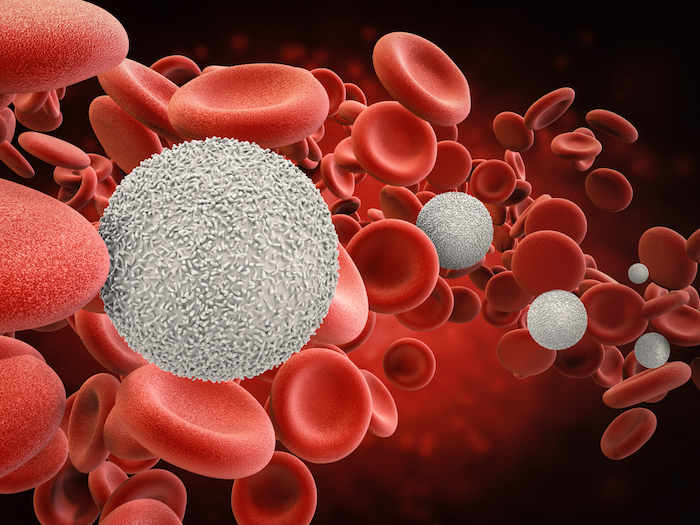Researchers From University Of California Discover MLLT3 Gene That Helps Blood Stem Cells To Multiply
Source: Thailand Medical News Nov 29, 2019 5 years, 4 months, 2 weeks, 2 days, 9 hours, 18 minutes ago
Researchers from University of California, Los Angeles (UCLA) have discovered a link between a protein and the ability of human blood
stem cells to self-renew. In a study published in the journal
Nature, the team reports that activating the protein causes blood
stem cells to self-renew at least twelvefold in laboratory conditions. Multiplying blood stem cells in conditions outside the human body could greatly improve treatment options for blood cancers like leukemia and for many inherited blood diseases.

A member of the Eli and Edythe Broad Center of Regenerative Medicine and Stem Cell Research at UCLA and senior author of the study, Dr. Hanna Mikkola has studied blood
stem cells for more than 20 years.
Dr. Hanna Mikkola told
Thailand Medical News via a phone interview, "Although we've learned a lot about the biology of these cells over the years, one key challenge has remained: making human blood
stem cells self-renew in the lab. We have to overcome this obstacle to move the field forward."
Hematopoietic
stem cells or commonly known as blood
stem cells are found in the bone marrow, where they self-renew as well as differentiate to create all types of blood cells. Bone marrow transplants have been used for decades to treat people with some diseases of the blood or immune system. However, bone marrow transplants have significant limitations: Finding a compatible bone marrow donor is not always possible, the patient's immune system may reject the foreign cells, and the number of transplanted stem cells may not be enough to successfully treat the disease.
Upon removal from the bone marrow and placed in laboratory dishes, blood
stem cells quickly lose their ability to self-renew, and they either die or differentiate into other blood cell types. Mikkola's goal, making blood
stem cells self-renew in controlled laboratory conditions, would open up a host of new possibilities for treating many blood disorders among them safer genetic engineering of patients' own blood
stem cells. It could also enable scientists to produce blood
stem cells from pluripotent stem cells, which have the potential to create any cell type in the body.
To understand what makes blood
stem cells self-renew in a lab, the researchers analyzed the genes that turn off as human blood
stem cells lose their ability to self-renew, noting which genes turned off when blood
stem cells differentiate into specific blood cells such as white or red cells. They then put the blood
stem cells into laboratory dishes and observed which genes shut down. Using pluripotent
stem cells, they made blood
stem cell-like cells that lacked the ability to self-renew and monitored which genes were not activated.
The researchers found that the expression of a gene called
MLLT3 was closely correlated with blood
stem cells' potential to self-ren
ew and that the protein generated by the
MLLT3 gene provides blood
stem cells with the instructions necessary to maintain its ability to self-renew. It does this by working with other regulatory proteins to keep important parts of the blood
stem cell's machinery operational as the cells divide.
The team from UCLA wondered if maintaining the level of the
MLLT3 protein in blood
stem cells in lab dishes would be sufficient to improve their self-renewing abilities. Using a viral vectora specially modified virus that can carry genetic information to a cell's nucleus without causing a disease, the team inserted an active
MLLT3 gene into blood
stem cells and observed that functional blood
stem cells were able to multiply in number at least twelvefold in lab dishes.
Dr Mikkola, who is also a professor of molecular, cell and developmental biology in the UCLA College and a member of the UCLA Jonsson Comprehensive Cancer Center said, "If we think about the amount of blood
stem cells needed to treat a patient, that's a significant number. But we're not just focusing on quantity; we also need to ensure that the lab-created blood
stem cells can continue to function properly by making all blood cell types when transplanted."
Other studies have identified small molecules of organic compounds that are often used to create pharmaceutical drugs that help to multiply human blood
stem cells in the laboratory. When Mikkola's team used the small molecules, they observed that blood
stem cell self-renewal improved in general, but the cells could not maintain proper
MLLT3 levels, and they also did not function as well when transplanted into mice.
Dr Vincenzo Calvanese, a UCLA project scientist and the study's co-corresponding author commented, "The previous discoveries with the small molecules are very important, and we're building on them. Our method, which exposes blood
stem cells to the small molecules and also inserts an active
MLLT3 gene, created blood
stem cells that integrated well into mouse bone marrow, efficiently produced all blood cell types and maintained their self-renewing ability."
Most importantly,
MLLT3 made the blood
stem cells self-renew at a safe rate; they didn't acquire any dangerous characteristics such as multiplying too much or mutating and producing abnormal cells that could lead to leukemia.
The researchers are planning further studies including determining what proteins and elements within blood
stem cell DNA influence the on-off switch for
MLLT3, and how this could be controlled using ingredients in the lab dishes. With that information, they could potentially find ways to switch
MLLT3 on and off without the use of a viral vector, which would be safer for use in a clinical setting.
Their discovery is extremely significant as it paves the way for increasing
stem cells usage in various medical applications.
Reference : Vincenzo Calvanese et al. MLLT3 governs human haematopoietic stem-cell self-renewal and engraftment, Nature (2019). DOI: 10.1038/s41586-019-1790-2
